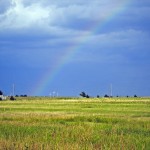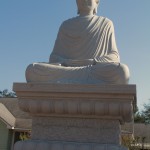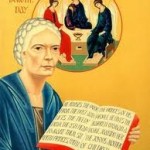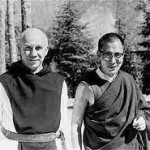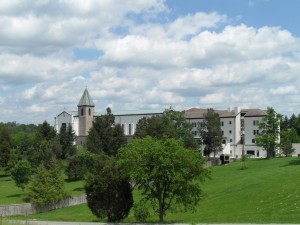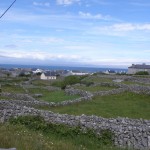
Beautiful Inis Oirr
Today, June 24, is the feast day of John the Baptizer. Traditionally John has been seen as the cousin of Jesus. John probably was a member of the Qumran sect that practiced frequent baptisms and ablutions. Hence, he called forth Jesus to prophetic ministry.
This feast day takes me back to Ireland in 2008. We were on the smallest of the Aran Islands, Inis Oirr, for the annual week-long bodhran school and festival. On these islands it is not unusual to see residents driving their tractors to the pubs–there are three pubs on this tiny island which faces the distant Cliffs of Mohr. On the days leading up to the feast of John the Baptizer, I noticed tractors and cars with trailers hauling trash and piling it atop the highest hill on the island. I began to wonder what was going on. Further investigation with Brid, our bed and breakfast hostess, indicated that they were building a bonfire.
At this point on the year, the sun starts to wane toward winter when, in Celtic thought, it loses its heat. The bonfire is to restore heat to the sun for a longer growing season. The Celts have always had the uncanny knack of blending of creation spirituality with traditional Christian feasts and practices. The Celts honor John the Baptizer by building bon fires to the cosmic sun.
Of course, the bonfires predate the Baptist. It’s one of those pagan customs co-opted by the Church when she co-opted Midsummer Night, exorcising its demons and baptizing whatever was harmless merriment. Now that the mighty prophet John owns June 24th, we can safely laugh at demons, fairies, leprechauns, and the other assorted lower classes of fallen angels thought to inhabit forests, rivers, meadows, and underground caves. Hence the fitness of Shakespeare’s comedy, A Midsummer Night’s Dream. In this story, fairies take advantage of the power they have on this night to inflict magical love spells on hapless mortals who fall into the crossfire of a dispute between the King and Queen of the fairy kingdom. The redeemed can safely laugh at such things, since they have no reason to fear them. (http://catholicexchange.com/john-the-baptist-bonfires/)
Or, as another source puts it:
June 24 is one of the oldest of the Church feasts. It is the birthday celebration of St. John the Baptist, and is sometimes called “summer Christmas.” On the eve of the feast, great bonfires were once lighted as a symbol of “the burning and brilliant” light, St. John, who pointed out Christ in this world of darkness. The solstice fires had been pagan, but now they were blessed by the Church in John’s honor. There are actual blessings for the bonfire in the Roman liturgy. Magical and superstitious elements of food and drink were forgotten, and we were encouraged to have great picnic feasts out-of-doors around the blazing logs. [http://www.catholicculture.org/culture/liturgicalyear/activities/view.cfm?id=461]
Years earlier we were on a bus tour in beautiful, lush green rolling hills of Wales. As we were walking after supper, we met a Welsh woman who engaged us in conversation and insisted on taking us to the sacred well. Reluctantly we accompanied her as she muttered, “Oh me heart, O, me heart.” But, we made it to the well. Again, the people have maintained an affinity to nature around them—sacred wells and sacred rivers. On the trip to Inis Oirr, I rambled about the island until finally I located St. Enda’s well. Not much of a well but a reminder of the missionary who converted the early inhabitants of Inis Oirr.
Thomas Merton always maintained a close relationship to the nature around him. At one point in his monastic career, the abbot made him forester of the monastery so Merton could nurture his love of creation. Speaking of the Welsh, I just learned that Merton’s mother, Ruth, who was from New York and his father, Owen, who was from New Zealand were both of Welsh ancestry. No wonder Merton was Celtic through and through. One only has to read Merton’s writings to understand his close communion at the altar of creation. Merton writes:
The forms and individual characters of living and growing things, of inanimate beings, of animals and flowers and all nature, constitute their holiness in the sight of God.
Their inscape is their sanctity. It is the imprint of His wisdom and His reality in them. (In Kathleen Deignan, When the Tress Say Nothing, 49)
All creation is sacred. The cosmos is holy. We are part of the ongoing handiwork of the Living One. We are the stardust from the initial Flaring Forth. The energy within our matter and the matter that is our energy is of the Living One.
James Finley, former student of Merton’s and a psychotherapist, says that “the root of suffering is estrangement from spiritual experience.” Estranged we are if we are cut off from our cosmic roots in the divine. Holiness is wholeness and the Living One wants us to have life and everything we need. (Jn 10:10) The feast of John the Baptist and the far-away cosmic bonfires remind us that baptism in water immerses us in creation.

